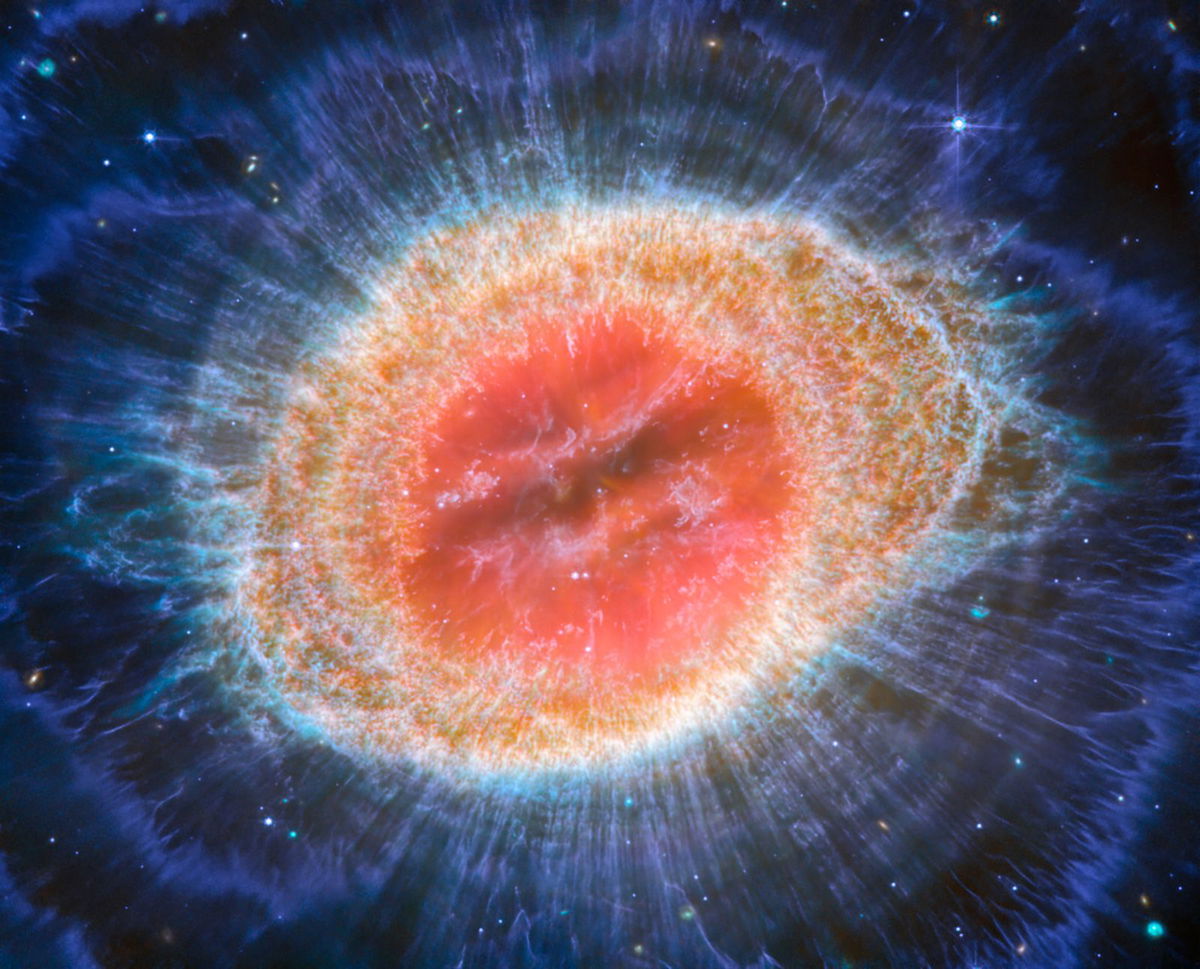Stunning new images reveal Ring Nebula in unprecedented detail

By Ashley Strickland, CNN
(CNN) — The James Webb Space Telescope has revealed colorful new portraits of the iconic Ring Nebula.
The new images capture the complex details of the planetary nebula, an enormous cloud of cosmic gas and dust that’s home to the remnants of a dying star.
The two images were taken in different wavelengths of infrared light, which is invisible to the human eye, using instruments on the space observatory. Webb previously captured a different perspective on the Ring Nebula, as well as the similar-looking Southern Ring Nebula.
A longtime favorite of astronomers, the Ring Nebula has been studied for years due to its observability and the insight it can provide into the lifetime of stars. It is located in the Lyra constellation more than 2,000 light-years from Earth, but on clear evenings during the summer, sky gazers using binoculars can see it.
Planetary nebulae, which have nothing to do with planets despite the name, usually have a rounded structure and were so named because they initially resembled the disks from which planets form when French astronomer Charles Messier discovered one for the first time in 1764.
Messier and astronomer Darquier de Pellepoix discovered the Ring Nebula in 1779.
Some nebulae are stellar nurseries where stars are born. The Ring Nebula was created as a dying star, called a white dwarf, began shedding its outer layers into space, creating glowing rings and expanding clouds of gas.
“As a last farewell, the hot core now ionizes, or heats up, this expelled gas, and the nebula responds with colorful emission of light,” wrote Roger Wesson, an astronomer at Cardiff University, in a NASA blog post about Webb’s latest observations of the Ring Nebula. “It begs the question: how does a spherical star create such intricate and delicate non-spherical structures?”
The nebula arc mystery
Wesson and his international team called ESSENcE, which stands for the Evolved StarS and their Nebulae in the JWST Era, used Webb’s Near-Infrared Camera and Mid-Infrared Instrument to capture unprecedented details that could help them understand more about how planetary nebulae evolve over time.
“The bright iconic ring structure of the nebula is composed of about 20,000 individual clumps of dense molecular hydrogen gas, each of them about as massive as the Earth,” Wesson wrote. Outside of the ring are prominent spiky features that point away from the dying star, which glow in infrared light but were only faintly visible in previous images taken by the Hubble Space Telescope.
The team believes the spikes are from molecules that form in the dense shadows of the ring.
The images taken with the Mid-Infrared Instrument, also called MIRI, provided a clear, sharp view of a faint halo outside the ring.
“A surprising revelation was the presence of up to ten regularly-spaced, concentric features within this faint halo,” Wesson wrote.
Initially, the team thought the observed arcs were formed as the central star released its outer layers over time. But thanks to Webb’s sensitivity, the scientists now believe something else may be responsible for the arcs within the halo.
“When a single star evolves into a planetary nebula, there is no process that we know of that has that kind of time period,” Wesson wrote. “Instead, these rings suggest that there must be a companion star in the system, orbiting about as far away from the central star as Pluto does from our Sun. As the dying star was throwing off its atmosphere, the companion star shaped the outflow and sculpted it.”
The-CNN-Wire
™ & © 2023 Cable News Network, Inc., a Warner Bros. Discovery Company. All rights reserved.






